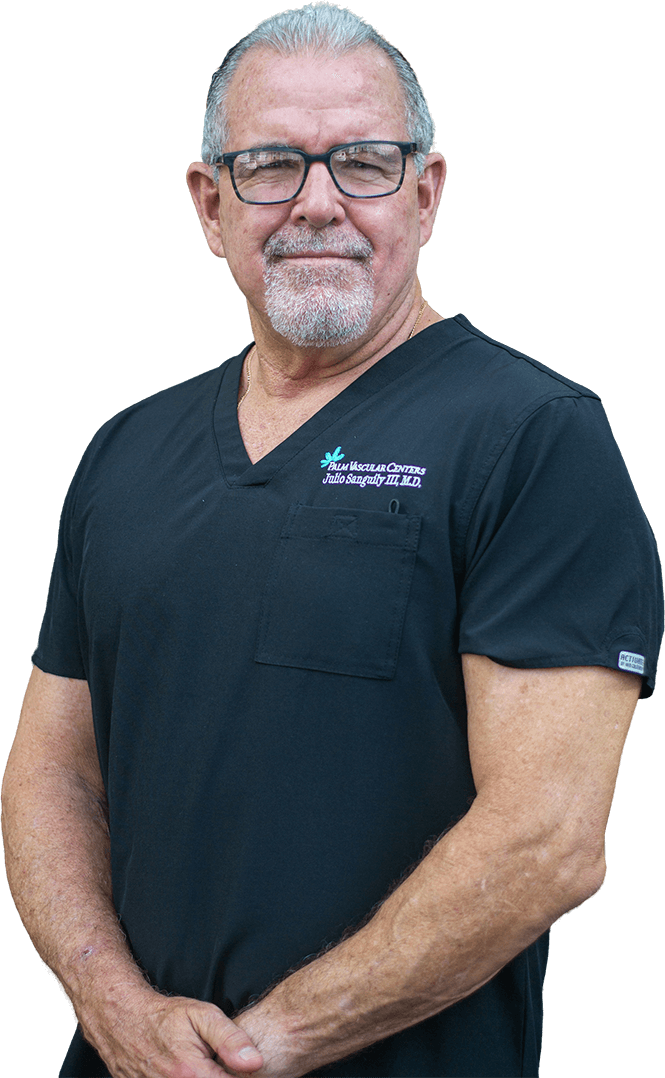About Julio Sanguily III, MD

Meet Your Doctor - Julio Sanguily III, MD
Dr. Julio Sanguily’s journey in the treatment of critical limb ischemia (CLI)—the advanced form of peripheral arterial disease (PAD)—and amputation prevention began initially as a vascular surgeon performing open bypasses in a hospital setting. In keeping up with medical progression, this has migrated to predominantly using advanced techniques in endovascular revascularization, including using alternative access sites and the latest innovatory technology. This portion of the journey started in 2007 with a mere nine cases—and has now flourished into our present day high volume of patients, each being treated for this advanced form of deadly disease.
His experience has taken him through the privilege of teaching and assisting many other physicians in joining this journey to preventing limb loss. He has also proven the results of his efforts by producing a publication (2015) which demonstrates his practice reducing amputations by 79% just by way of increased vigilance in diagnosing the PAD and CLI patient populations.
After the first year of opening Palm Vascular Centers of the Treasure Coast, we are happy to report that we’ve made a serious impact in the community in avoiding limb loss and preventing amputation. We encourage all patients that are facing amputation to seek a second opinion.
Catching Peripheral Arterial Disease early is important
PAD Patients are at more than 6 times the risk of death from coronary heart disease as those without PAD. If you're experiencing symptoms, see a doctor.
During your initial visit we will:
- Learn about your medical history and symptoms
- Perform a comprehensive vascular physical
- Perform an ultrasound to see vasculature (if necessary)
- Discuss treatment options and next steps
Important PAD & CLI Facts
Eight million Americans suffer from PAD.
160,000+ amputations occur every year in in U.S. as a result of untreated PAD.
54% of those amputation patients never even received a diagnostic angiogram.
Angiograms reduce the odds of amputation by 90%
